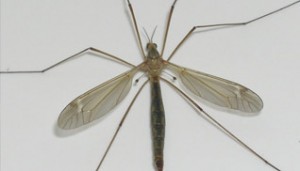During the summer, it’s common to see crane flies clustered around porch lights in search of small bugs to eat. But during the cooler months, from fall to spring, the larva of adult crane flies find something else to feed on: grass.
Known most commonly as leatherjackets, these larvae hatch in late fall and feed through spring until they mature. Because the small, worm-like larvae often go sight unseen, many people don’t realize that their lawns are literally being eaten right before their eyes.
Once the problem has been identified, however, it’s important that the issue is resolved as quickly as possible, before new leatherjackets hatch. Treatment can be applied anytime from October through April, but is most effective between the months of February to April.

Because eliminating leatherjackets from lawns can be a bit tricky, it’s best to trust the removal to an experienced lawn care professional. This is where Spring-Green Lawn Care comes in.
Mike Bell, owner of Spring-Green Lawn Care in Lacey, says it’s best to address the problem as soon as possible. “If a critical population is reached, meaning the point where the leatherjackets are feeding on grass at a rate greater than the grass can recover, then the lawn can be destroyed and will require restoration by reseeding or re-sodding.”
Bell advises that an insecticide be applied at the first sign of crane fly damage. “The product we apply to the lawn will control the crane fly population present in your lawn,” he says. “When we make an application of an insect control product to your lawn, our goal is to minimize the damage and not to kill every larva present. There may be some residual control of other insects, but at this time of year, insect activity is very low.” Because the insecticide Spring-Green uses is so effective, Bell says one treatment is typically adequate.

Spring-Green understands that fall, winter and spring are the seasons when many lawn care issues tend to surface, which is why Spring-Green will happily bundle its two most popular services, crane fly control and moss control, for its customers. By bundling the two services, homeowners can rest assured knowing that their lawns will grow in healthy and green, just in time for summer.
Once your lawn has returned to a healthy, happy state, Bell says there are a few things homeowners can do to ensure their lawns stay lush and green in the seasons ahead.
“If your lawn is in an area that is prone to crane fly activity or your lawn has had crane fly activity in the past, there is a good chance that they will return again next year,” he explains. “Applying a preventative application can reduce future damage to your lawn.”
Bell also notes that reducing the amount of thatch in your lawn through an annual core aeration is also a good idea, as thatch is an incubation chamber for many diseases and insects, including crane fly larvae. “A lawn that is properly fertilized will have a stronger root system and have the ability to recover faster from insect or disease infestations,” Bell adds.

For more information about Spring-Green’s crane fly control services, visit spring-green.com or call 360-438-2885 for more information.
Spring-Green Lawn Care
Mike Bell, Owner
360-438-2885 | www.spring-green.com
Sponsored




















































